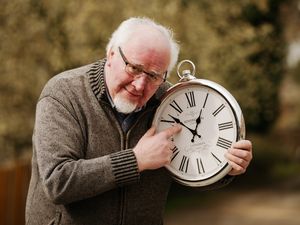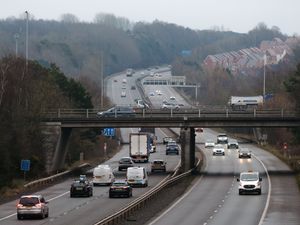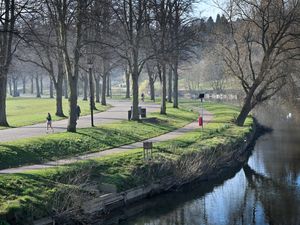County's Roman site to feature on TV
TV crews are set to descend on a historic Shropshire Roman city for a new documentary to be viewed by millions.
TV crews are set to descend on a historic Shropshire Roman city for a new documentary to be viewed by millions.
 A planning application is expected to be rushed through Shropshire Council next week for the construction of a replica Roman villa at Wroxeter, near Shrewsbury, at a site near the old barns.
A planning application is expected to be rushed through Shropshire Council next week for the construction of a replica Roman villa at Wroxeter, near Shrewsbury, at a site near the old barns.
Roger Pittaway, clerk of Wroxeter and Uppington Parish Council, said the project, which will use authentic materials, was discussed at a meeting this week.
He said: "It is to be constructed by a team of builders using authentic materials, commencing in April.
"It appears the building will be left intact for English Heritage to use as an educational tool.
"I think the TV show will be a six week programme following the building of this thing. I think they want to get the community involved as there will be quite a bit of disruption in Wroxeter with the film crews and catering vans and everything."
A spokeswoman for English Heritage, which maintains Wroxeter - once the fourth largest city in Roman Britain, said they were fully behind the new plans.
She said: "Wroxeter has a rich Roman history and English Heritage welcomes innovative approaches to bringing our cultural heritage and historic environment alive for as broad an audience as possible.
"Should the project be approved, the resulting villa will provide a creative educational resource allowing visiting school children, and the wider community, an opportunity to get up close and personal with how the Romans worked and lived."
Wroxeter, or Viroconium, began life as a legionary fortress and later developed into a thriving civilian city, populated by retired soldiers and traders.
Though much still remains below ground, today the most impressive features are the second-century municipal baths, and the remains of the huge wall dividing them from the exercise hall in the heart of the city.
The site museum and audio tour reveal how Wroxeter worked in its heyday, and the health and beauty practices of its 5,000 citizens. Archaeological discoveries provide a glimpse of the last years of the Roman city, and its possible conversion into the headquarters of a fifth-century British or Irish warlord.
Last year marked the 150th anniversary of the re-discovery of Wroxeter Roman City.
In February 1859 workmen began excavating the baths complex, and by April much of the present site was exposed for the public to enjoy.





